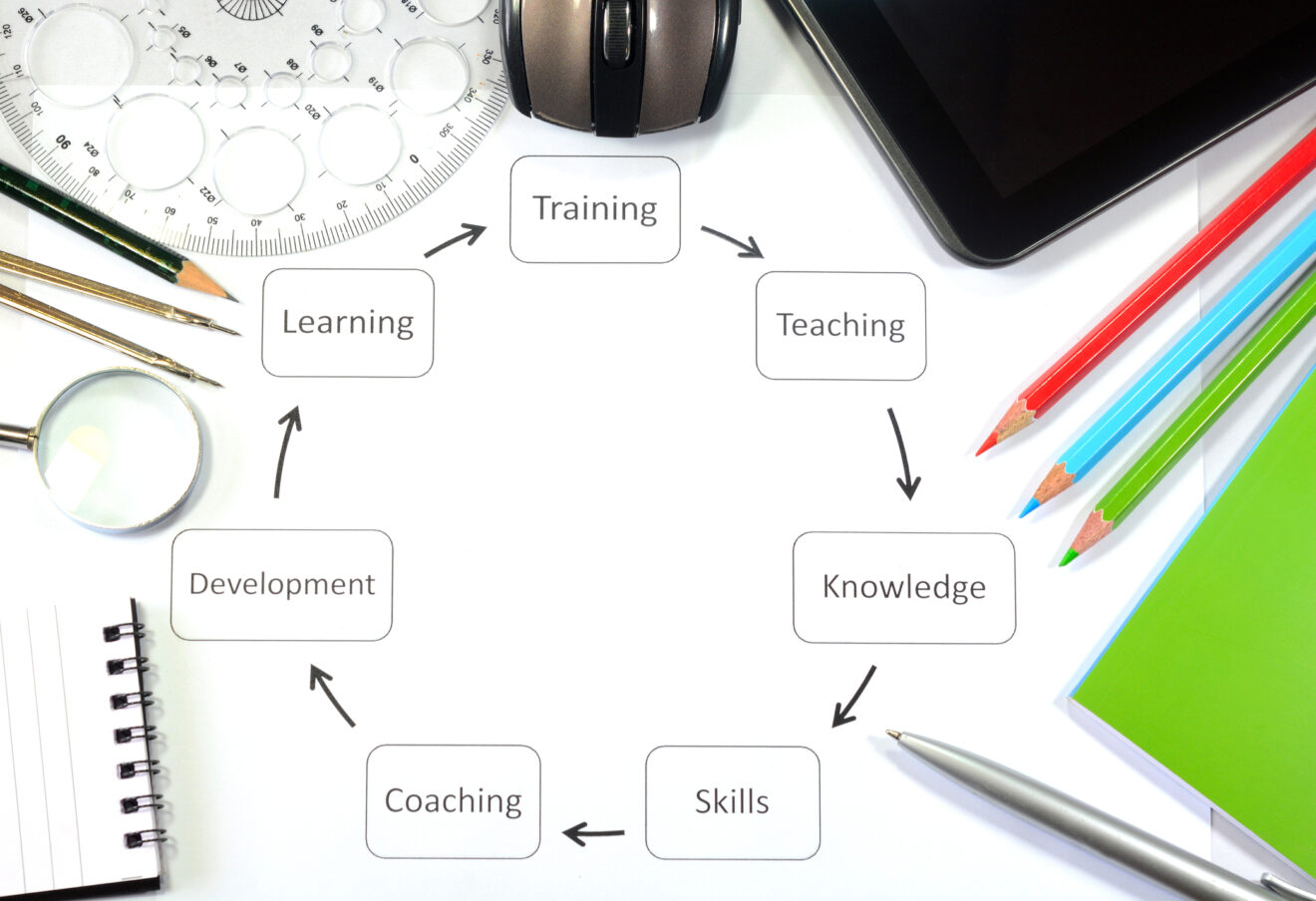In my previous article, ”7 ways to measure instructional coaching for impact, not activity,” I addressed the importance for all coaching programs and coaches to collect efficacy data for themselves and various stakeholders. Instructional coaches should set specific goals and collect relevant data at the start of the year to ensure they have a clear direction and can measure their impact.

While tracking instructional coaching impact is critical, another overlooked aspect of coaching is tracking its effect at a district level. As coaches start a new school year, this is the perfect time to plan how they can collaborate to set specific goals, collect relevant data and track coaching impact by:
- Determining which district-level data to compile and analyze that demonstrates teacher growth and student outcomes.
- Identifying common data mistakes and avoiding them.
- Creating district-level reports to illustrate the effectiveness of coaching.
Why track coaching impact at a district level?
Tracking coaching impact goes beyond simply logging coaching activities and delves into measuring the effectiveness of coaching on teacher growth and student outcomes.
Coaching impact matters because it validates the effectiveness of coaching in supporting teacher growth, improving instructional practices and positively affecting student outcomes. Instructional coaches can gain valuable insights into their coaching efficacy and teacher growth. It’s essential to be intentional about data collection and use it as a tool for continuous improvement and evidence-based decision-making.
District-level reports compiled by coaches can showcase coaching achievements, highlight success stories and demonstrate the effectiveness of coaching programs across the district. That’s essential for gaining support from school leaders, teachers and stakeholders and ensuring the sustainability and continuation of coaching programs.
Will ESSER affect district coaching initiatives?
Elementary and Secondary School Emergency Relief funds were part of the federal government’s response to the COVID-19 pandemic to support education and schools across the US. These funds helped implement safety measures, support remote learning and mitigate learning loss. They also played a significant role in funding coaching initiatives to support teachers’ professional development, enhance instructional practices and promote student learning outcomes.
It’s essential to recognize that ESSER funds are time-limited. When this article was published, the availability of ESSER funds was expiring for the 2024-25 school year. When these funds expire, school districts may need to explore alternative funding sources, reduce or adjust coaching positions funded by this money, or even scale back coaching services. These ESSER funds in my former school district funded $2.2 million of teachers’ salaries.
As ESSER funding ends, it becomes even more crucial for schools and districts to evaluate the impact of coaching initiatives on teacher practices and student outcomes. This evaluation can help determine the most effective coaching strategies and guide future decision-making.
What’s needed in a district instructional coaching impact report?
District-level reports compiled by instructional coaches showcase coaching achievements, highlight success stories and demonstrate effectiveness across the district. Coaches can collaboratively gather data from coaching logs, pre-and post-surveys, student performance data analysis, goal attainment, classroom observations, progress monitoring, journals, reflective questions, focus groups, action research projects, portfolios and teacher artifacts. Report examples might include:
- Coaching Impact Summary Report. An overview of coaching impact across the district, highlighting key data points such as the number of teachers coached, coaching goals achieved, coaching cycles and student outcomes.
- Teacher Survey Analysis Report. A comprehensive analysis of pre- and post-surveys administered to teachers to measure changes in their instructional practices, confidence and perceptions of coaching effectiveness.
- Student Performance Data Report. An analysis of student performance data, comparing the academic progress of classes that received coaching support with those that did not.
- Teacher Growth Profiles. Profiles of individual teachers showcasing their growth journey with coaching support, along with specific examples of improved instructional practices.
- Case Studies of Coaching Success. Detailed case studies of teachers who have experienced significant growth and success through coaching interventions. These stories highlight specific coaching strategies and their impact.
- Visual Infographics on Coaching Impact. Infographics that visually represent coaching impact data, success stories and key achievements. Infographics make data more accessible and engaging for a wider audience.
- Coaching Outcomes by Subject Area or Grade Level. An analysis of coaching outcomes illustrating how coaching has influenced specific instructional domains.
- Teacher Reflections and Feedback Report. A compilation showcasing the qualitative impact of coaching on teachers’ professional growth.
- Coaching Program Evaluation Report. An evaluation of the program’s overall effectiveness, examining coaching objectives, alignment with district goals and recommendations for improvement.
- Impact on School Culture and Collaboration Report. An analysis of how coaching has contributed to a positive school culture, increased teacher collaboration and integrated coaching practices into schoolwide initiatives.
How can district coaches track coaching impact as a group?
To show how teacher growth and student learning have been positively affected, instructional coaches must carefully consider data collection, analysis and reporting.
- Define clear coaching objectives and intended outcomes. These should be aligned with district priorities and goals to provide a focused direction for data collection and ensure the data collected aligns with teacher practices and student learning.
- Use multiple data sources. Collect data from coaching logs, surveys, observations, teacher artifacts, student performance data and other sources. This should provide a holistic view of coaching impact, allow for collecting quantitative and qualitative data, and strengthen the validity of findings.
- Collaborate on data collection. Gather with other coaches for regular data analysis meetings to share insights, data collection methods and best practices. This ensures consistency in data collection and promotes collective learning and improvement among coaches.
- Ensure data quality and accuracy. Pay close attention to the quality and accuracy of data collected to ensure it draws accurate conclusions and allows for informed decisions. Develop data validation processes, conduct regular checks and cross-reference data with other sources for verification.
- Analyze data thoughtfully. This will help identify trends, patterns and meaningful insights to draw evidence-based conclusions. Use data visualization tools to create graphs and charts that make data more accessible and facilitate data-informed decision-making.
- Prioritize impact on student learning. Emphasize data related to student outcomes and learning growth because they are the ultimate indicator of coaching effectiveness on academic achievement, development and progress.
- Showcase success stories and case studies. Personal narratives add a human touch to the data and demonstrate coaching’s direct impact on individuals. Collaborate with teachers to develop case studies highlighting coaching strategies and their effect on classroom practices.
- Align data with district goals. Alignment demonstrates how coaching initiatives contribute to broader district objectives and serve as a reference point when demonstrating coaching impact.
By collaborating as a group, instructional coaches strengthen the districtwide coaching program, enhance data analysis capabilities and foster a supportive learning community for coaches and teachers.
How can you avoid common data mistakes?
Just as instructional coaches must empower teachers to analyze and use student data, coaches need to avoid common data pitfalls in their own reports To present an accurate, comprehensive view of coaching impact, avoid:
- Over-reliance on quantitative data. Consider qualitative insights, too, so you don’t overlook important nuances.
- Failing to collect baseline data. Don’t start coaching initiatives until baseline data is gathered, or you won’t be able to measure progress and growth accurately.
- Cherry-picking data. Avoid selectively presenting only positive data and excluding less favorable findings, challenges or areas for improvement. A balanced view is essential for a comprehensive report. Embrace areas of improvement as opportunities for growth and development, as they may provide the “what’s next” perspective.
- Using data without context. Data can’t be offered in isolation; it requires context or background information.
- Drawing causal conclusions without evidence. Correlation does not necessarily imply causation. Strong evidence is imperative when suggesting causal relationships.
How might coaches structure a district-level report?
An effective coaching program evaluation report should provide a comprehensive assessment of its impact, effectiveness and alignment with district goals. It should include qualitative and quantitative data to present a well-rounded view of outcomes. These sections are typically found in a coaching program evaluation report:
- Executive Summary. Present an overview of the coaching program, its objectives and the purpose of the evaluation. Summarize the main findings and key recommendations.
- Introduction and Background. Provide context for the coaching program, including its inception, goals and target audience. Explain the rationale for conducting the evaluation.
- Evaluation Methodology. Describe the evaluation approach, data sources and data collection methods used. Explain how qualitative and quantitative data were gathered and analyzed.
- Coaching Program Components. Outline the various components of the coaching program, such as one-on-one coaching, group workshops and professional learning communities.
- Coaching Goals and Objectives. Present the coaching program’s goals and objectives, aligning them with districtwide instructional priorities.
- Data on Coaching Activities. Provide data on coaching activities, including the number of coaching sessions, teachers coached and the frequency of interactions.
- Teacher Surveys and Feedback. Share results from pre- and post-surveys administered to teachers, capturing their perceptions of coaching effectiveness and impact on their instructional practices.
- Student Outcome Data. Include data on student performance, growth or achievement, comparing classes that received coaching support with noncoached classes.
- Teacher Growth and Progress. Share case studies or testimonials of individual teachers who have experienced significant growth through coaching, highlighting specific strategies that led to their improvement.
- Impact on School Culture. Describe how the coaching program has contributed to a positive school culture, fostering collaboration and improving instructional practices.
- Coaching Program Successes and Challenges. Discuss notable successes and challenges encountered during the implementation of the coaching program.
- Recommendations and Future Directions. Offer recommendations for enhancing the coaching program’s effectiveness, areas for improvement and potential future directions.
- Reflections From Coaches and Administrators. Include feedback from instructional coaches and school administrators regarding the coaching program’s strengths, areas of growth and its impact on teacher and student outcomes.
- Alignment With District Goals. Assess how the coaching program aligns with the district’s strategic goals, professional development and instructional improvement priorities.
- Conclusion. Summarize the key findings and the overall impact of the coaching program. Emphasize the importance of coaching in supporting teacher growth and student achievement.
When instructional coaches collaborate — sharing insights and strategies and tracking coaching impact using evidence-based methods — they provide a compelling case for the value of coaching in supporting teacher development and student achievement.
Donna Spangler, a 35-year education veteran, is the former K-12 instructional coach department chair for Derry Township School District in Hershey, Penn., from which she recently retired. Spanger served as past co-president of the board for the Learning Forward PA, ran a school induction and mentoring program for six years and has co-authored a book. She also is an instructional designer for Edjacent and a virtual coach for Sibme.
Opinions expressed by SmartBrief contributors are their own.
_________________________
Subscribe to SmartBrief’s FREE email ASCD newsletter to see the latest hot topics in education. It’s among SmartBrief’s more than 250 industry-focused newsletters.
